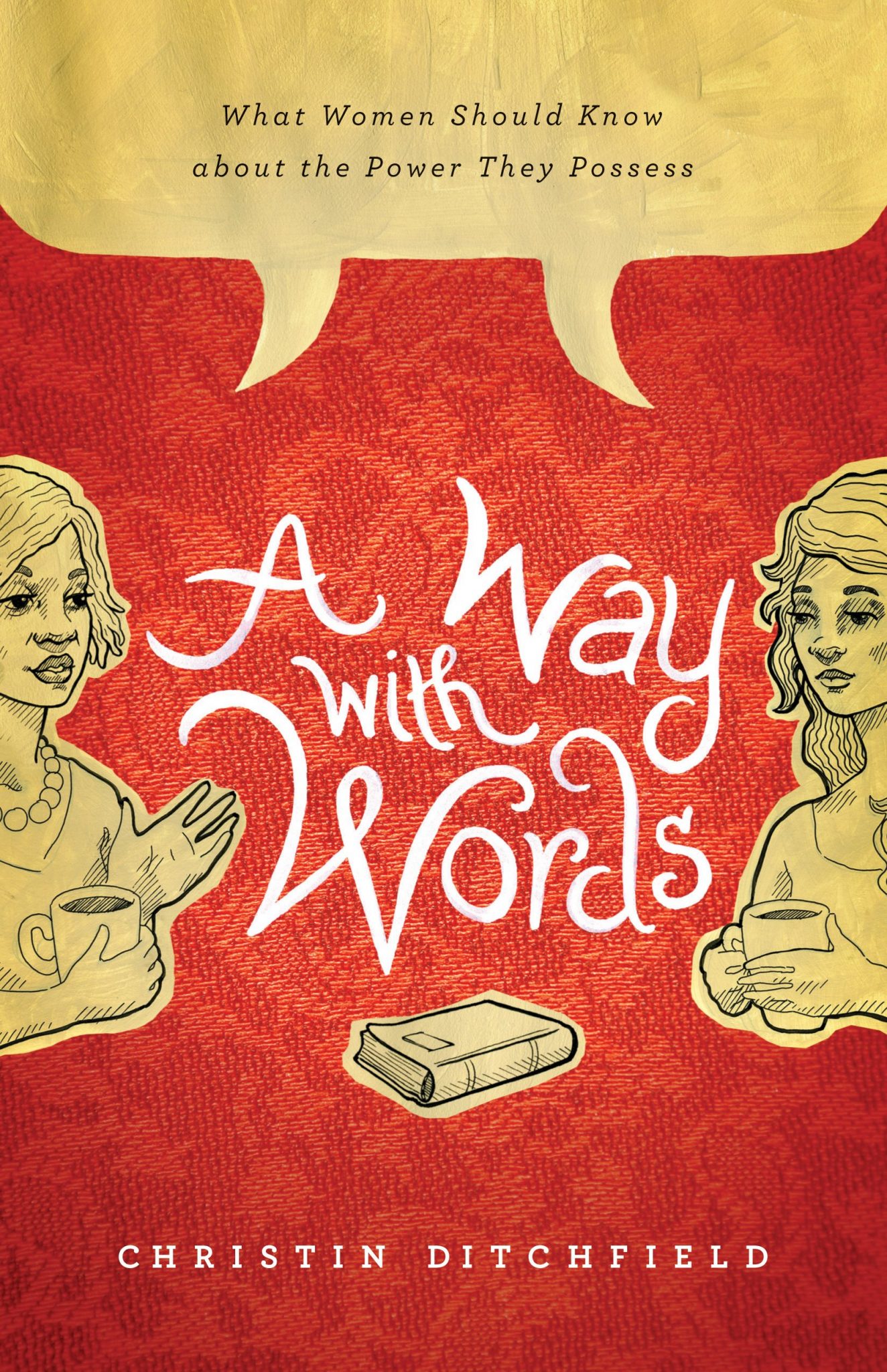Studies have shown that women speak nearly twice as many words a day as men do. Spend any amount of time with a group of women and most likely you will find that these statistics hold some weight. Women use their words abundantly, and this premise is the theme of Christin Ditchfield’s book A Way with Words: What Women Should Know About the Power They Possess. Ditchfield is one who has a way with words herself, speaking regularly at conferences, hosting an internationally syndicated radio show, and authoring several books.
Summary
There are many good books out on the Christian’s use of words, so why do we need another one? Guarding the tongue is a problem for many believers, male and female. Ditchfield takes this issue and applies the problem and solution to women’s specific desires and needs. Her first chapter, “Women Have a Way with Words,” sets the stage for the remainder of the book. Women have the potential for great influence in this world, she says, “and the way we wield that influence most often is with our words” (13). Our words serve a purpose.
Each subsequent chapter either touches on the redemptive aspect of our words or the sinful aspect. These chapters talk about words that wound, heal, reveal, live, die, sing, cry, reach, teach, and ring. She ends the book with the chapter “Words Aren’t Everything,” essentially saying two things: our words are meaningless if our actions do not back them up, and we are not without hope for change if we get to the end of this book and realize how poorly we use our words (158–159).
Ways the Books Is Helpful
Overall, the book has a solid foundation, based on the Bible and focused on the heart. Ditchfield understands that it is the heart that is the breeding ground for our words. “For good or bad, for better or worse, our words reveal what’s in our hearts—because that’s where they begin. They are signs or ‘symptoms’ of our heart’s condition,” (56). She also understands that the Bible is our guide and source of strength when thinking through our words. The Bible is the mirror through which we see ourselves, and the daily nourishment to feed our starving souls (70-72). It also contains everything we need for godliness. Perhaps the greatest asset of this book is the Bible study section at the end of every chapter. This only enhances the usefulness of the book for women both personally and in group settings. Along with seeing the importance of the Bible in our life, Ditchfield also clearly values the importance of the Titus 2 relationship between older and younger women (132).

A Way with Words: What Women Should Know About the Power They Possess
Christin Ditchfield
A Way with Words: What Women Should Know About the Power They Possess
Christin Ditchfield
Women have a way with words. A woman’s strength, influence, and ability to change the world for better―in every season and in every relationship―lies in the words she speaks each day. But with that God-given power comes the need to use it wisely, and this book provides both biblical and practical guidance to that end.
In A Way with Words, author and veteran speaker Christin Ditchfield challenges women to embrace God’s gift of words and to think carefully about how they use it.
In the chapter “Words that Teach,” she highlights the fact that all women are born teachers in some capacity, be it professionally, in our homes with our children, or in the church (133). She is quick to make the distinction, however, that the apostle Paul is saying that this teaching role must fall within the guidelines of Scripture, namely that the pastorate and leadership in the home is reserved for men (134–135). It is within this context that she shows, through the examples of biblical characters, the importance of the mentoring relationship between older and younger women (137–138).
Ways the Book Could Be Improved
Although this book carries many helpful truths to aid women in their struggle with words, there are a few areas that could use improvement or clarification to make the book even more useful. In her chapter “Words that Teach,” she briefly addresses the biblical teaching on male leadership in the church and home. She sees the Bible as clearly restricting the pastorate to men. However, when she moves into speaking on women teaching in the church, she seems to allow for openness depending on varying local churches (135–137). This could be confusing to a reader who is struggling through understanding God’s design for men and women, or for a reader who is new to the debate. In the end she defers to the notion that women are called to teach in some capacity, depending on the position of your church (137).
While it might seem like a minor issue (only three pages in a book), statements that waffle on the Bible’s teaching can be detrimental to the authority of the Bible and the theology of the reader. While she is clearly interested in people coming to Christ (121), it seems there is a missing emphasis on the necessity of the gospel daily as we battle our war with words. I found myself wishing for something more as I read. She talks specifically about hope for change if we have failed with our words (159), but often tends towards more pragmatic approaches, rather than direct gospel transformation. She mentions the need for Christ and his work (60 and 127), but generally leans heavily on the practical side. Practical is very helpful, but people need the gospel.
Conclusion
Overall this book is a good study of our words and their power to influence. She understands the purpose of our words and understands how we can change. Women who are seeking to use this book for study in their women’s ministries, or even personally, might need to be aware of the need to not only point women towards principles for behavioral change, but lead them from the revelation of their evil heart to the One who can change the very course of their words—Jesus Christ.

































